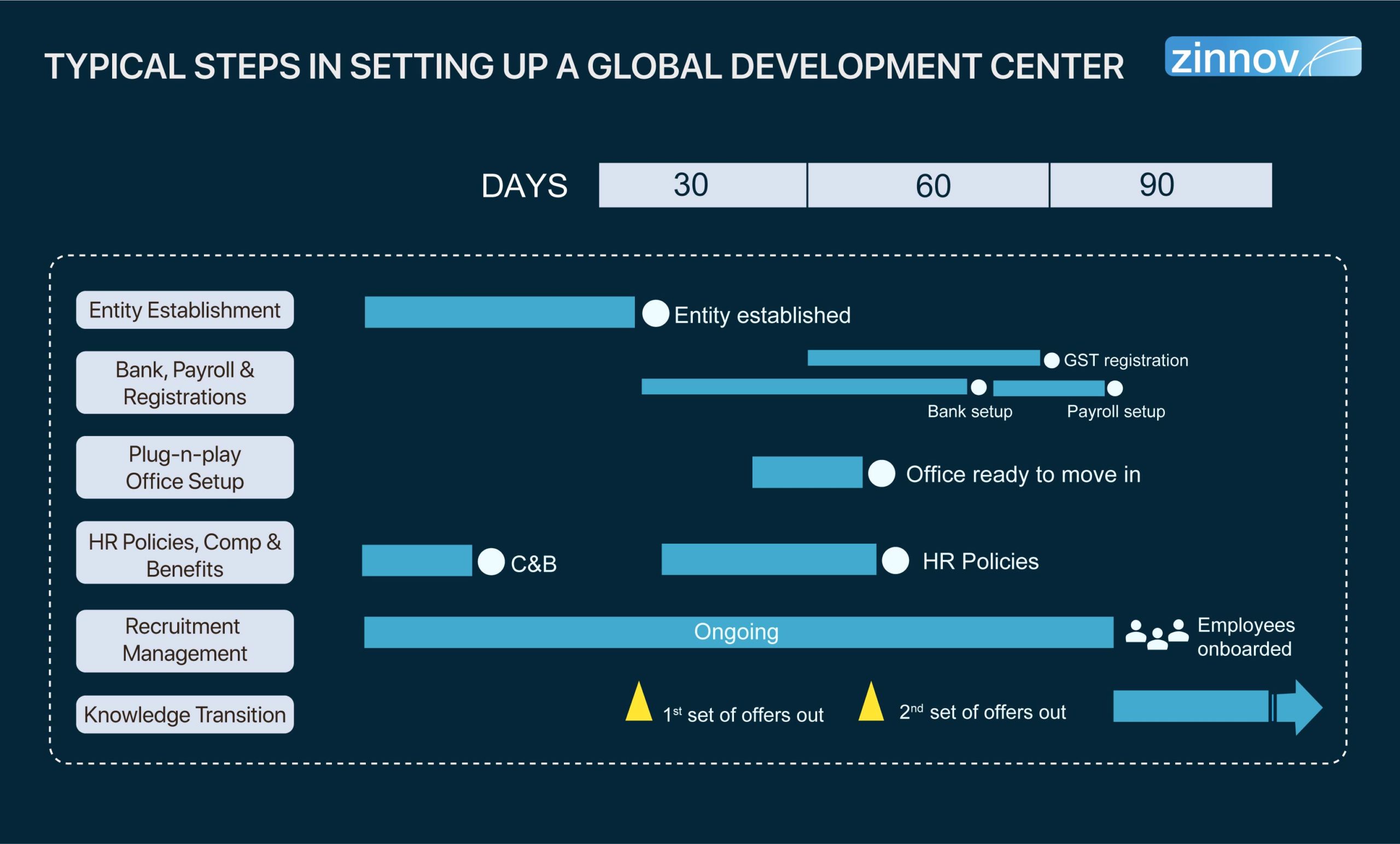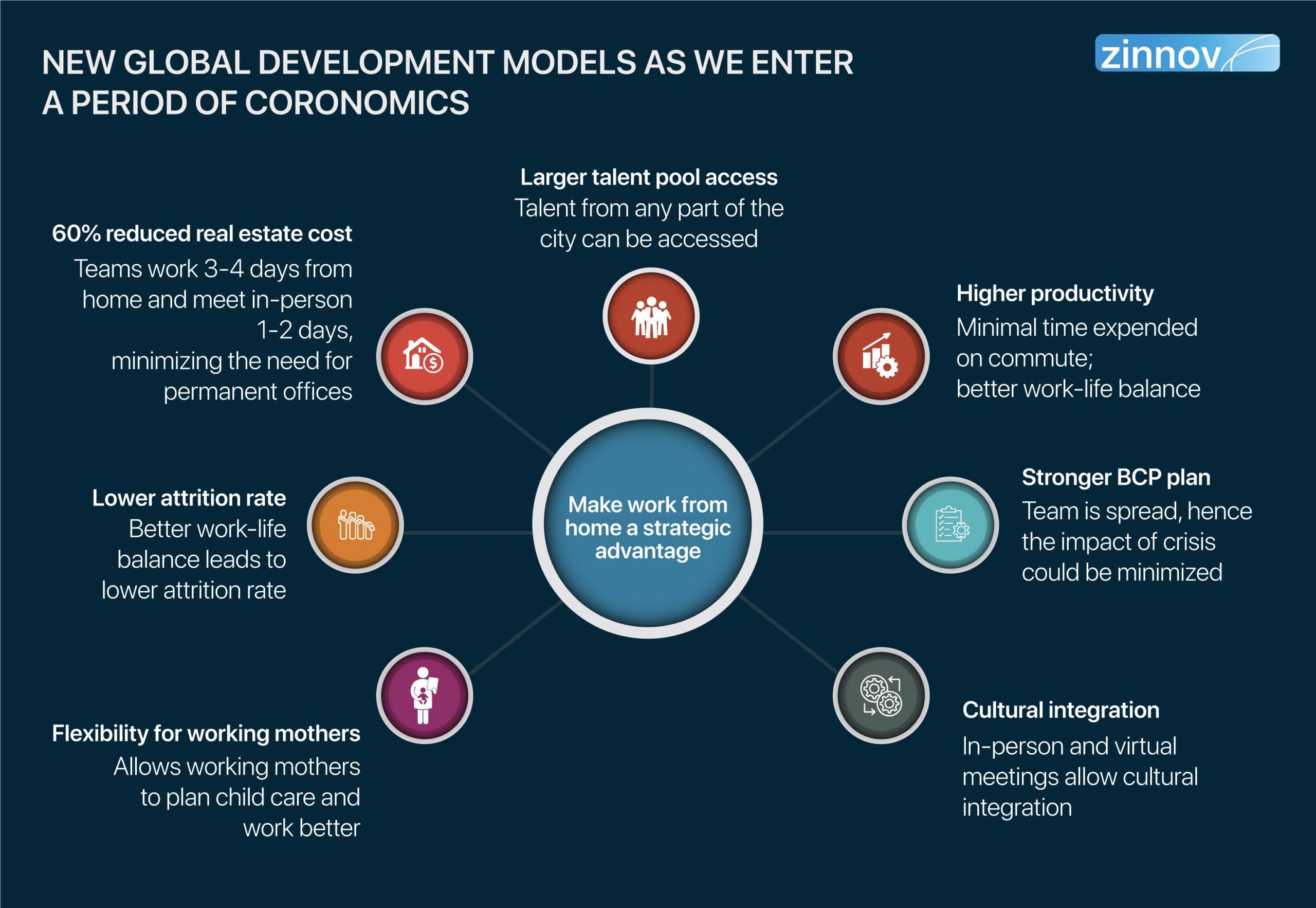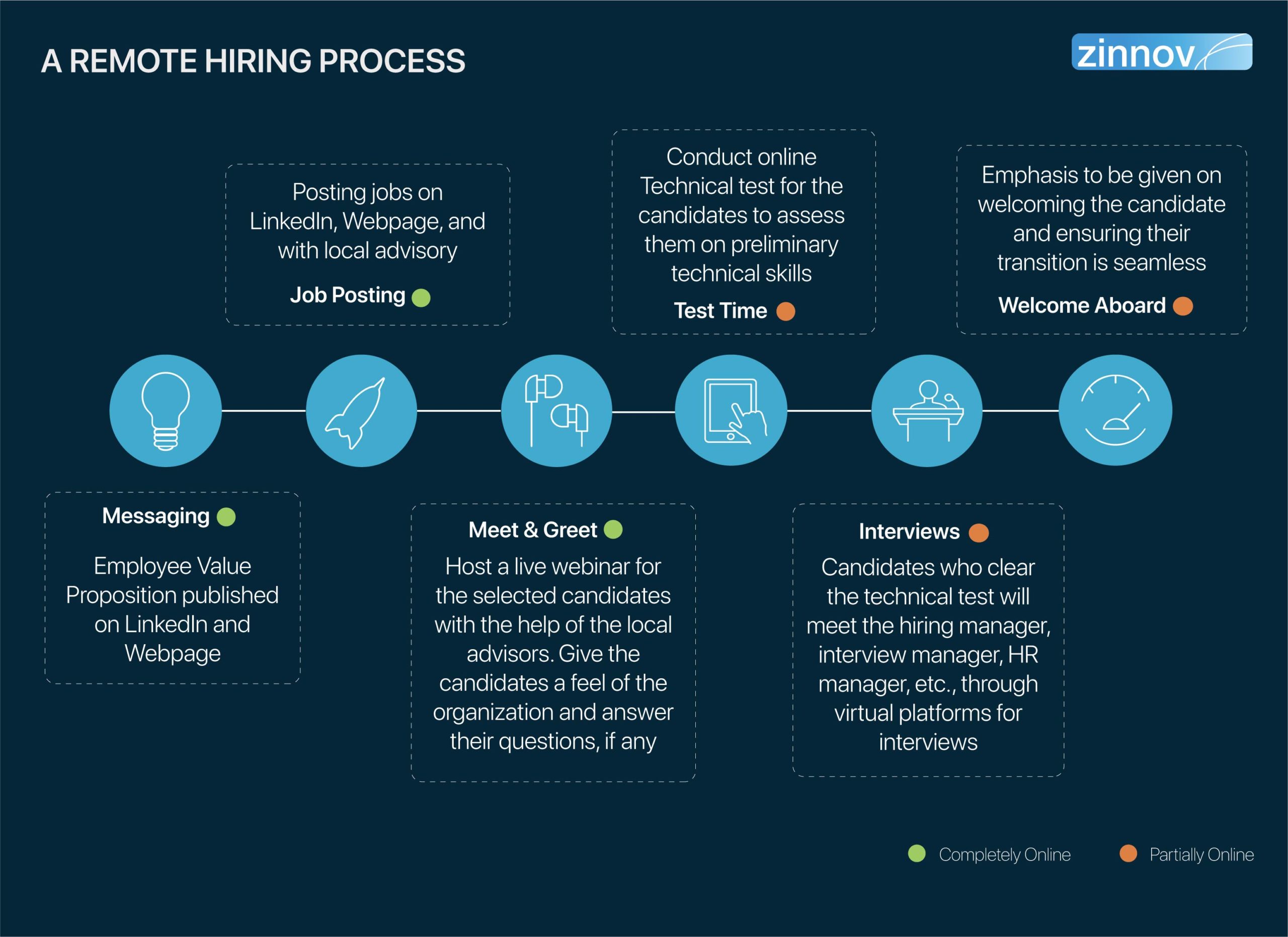|
|
This Zinnov POV focuses on the process of establishing Global Development Centers without having to travel internationally. It also elucidates the idea of a hybrid model for teams to partially work from home and the benefits of doing so.
Crises, whenever and however they have manifested, have created paradigm shifts in our society. And as the world grapples with COVID-19, we can and should expect business transformation that will shape how businesses operate over the next several decades. Containment of a pandemic at a global scale requires efficient financial risk distribution that can only be achieved with effective and renewed globalization as opposed to localization of business entities. Globalization has allowed to keep the supply of goods and services nearly uninterruptedi, and thus kept in check global inflation ratesii making globalization relevant now more than ever.
Global Talent Hotspots
In-depth analysis of 23 global locations across North America, LATAM, Central and Eastern Europe, and APAC. Download the ReportCOVID-19 has created new structural changes that will become part of the new normal on the other side of recovery. Companies have begun focusing on their long-term supply chain strategies, where they are redistributing risk by not relying on a single country/location for any resource. To this effect, Japan approved USD 2 Billion additional budget to help companies move their high-value production back to Japan and USD 217 Million to move them to other ASEAN countriesiii. In short, globalization helps build resiliency and ensure business continuity.
According to a Zinnov survey conducted on 50 PE and PE-owned software companies in the first half of April 2020 (when COVID was at its peak in the US), 96% of companies surveyed said they were thinking of cash/cost optimization. Of these, 55% said they were considering optimizing R&D costs through establishing new global R&D centers at low-cost locations or increasing talent at current centers or with global outsourcing partners.
But how can global development centers be set up during (and in the post-COVID era), when people are wary of domestic and international travel, and companies want to optimize cost?
There are two lynchpins in successful remote setting up of a global development center –
1) Having ‘trusted’ feet on ground at the identified global location, which translates into having local subject matter and ecosystem experts who can efficiently manage the process without excess overhead of time and/or money.
2) A strong local leader to ramp up and lead the teams to success from the time of inception of the center (we will cover this in another blog).
To set up a meeting with our experts, Contact Us.
With technological advancements and relative ease of doing business in most locations, setting up a center through remote collaboration has become easier than ever before. Typically, setting up a global center is a series of steps that happen in parallel as illustrated below.

Completely Online Workstreams: The “completely online” workstreams are traditionally completed through remote collaboration between the experts from the organization and the on-ground SME from the local advisory. Effective virtual collaboration and a strong understanding of the local ecosystem, as well as regulations, are the keys to success in these workstreams.
Legal and compliance procedures across nations have become much more streamlined. Owing to the digitization of most bureaucratic processes, we can expect transparency, speed, and ease in setting up new businesses in countries such as India.
HR Policies and Benefits are the holy grail of any new global development center to ensure a smooth experience for the employees across their tenure. Zinnov leverages its strong benchmarks and SMEs to set up robust HR policies and benefits across the value chain, right from outlining the offer letter and the onboarding document, to formulating the code of conduct policy, to designing compensation & benefits policies, all the way through to framing the separation policies. Our extensive expertise ensures that global companies set up seamless glocalized (global but local) GCoE (Global Centers of Excellence) HR policies and benefits.
Using online collaboration platforms and demo of payroll management software, the local SME can help global companies set up a strong accounting and payroll system, completely remotely.
Partially Online Workstreams: The “partially online” workstreams might need physical interventions in a conventional method of working, but can, in essence, be completed virtually as outlined below.
India is home to around 4.1 Million IT and ITeS talentiv. When COVID-19 forced a sudden and extended work from home situation, these millions of employees quickly and nimbly adjusted to the new normal and managed communication, bandwidth issues, hardware concerns, etc., seamlessly. The industry proved its agility and showcased productivity at par, and in some cases better than before. Combine this with the increasing cost optimization pressures, companies are going to question the traditional office strategy, in favor of revamping it around remote work.
Companies can save 60% or more on rental costs by planning to have employees meet only 1-2 days per week for work that requires strong in-person collaboration, workshops, etc. The 1-2 days of in-person work can be done from several plug-and-play offices (WeWork, Regus, etc.), instead of dedicated built-from-scratch office buildings.

Benefits of a ‘hybrid work week’ model are numerous as illustrated above.
While the merit of physical presence during the hiring process cannot be denied, we strongly believe that virtual interactions can be as effective, if the assessment process is strong. In terms of time and cost savings, a virtual hiring process can be over 60% more effective than hiring via traditional methods.

The most important aspect of virtual recruitment is to create a strong profile assessment process. A Harvard study corroborates this. It cites that improving the quality of assessments is three times more profitable than increasing the size of the candidate pool, and six times more profitable than getting the chosen candidate to accept a lower compensation package.
A completely remote hiring process is outlined below:
COVID-19 has pushed some recently set up global development centers to take on knowledge transition (KT) to a new team completely virtually. What has immensely helped these companies – good documentation of self-learning material and an experienced colleague acting as a buddy to the new hire, who takes an in-depth knowledge transition session and provides hands-on training through code check-in, answering questions on a daily basis along with open and frequent online communication between the buddy and the new hire.
While it is common practice for new hires in global centers to travel internationally for a couple of weeks for in-person training with the older set of colleagues, the forced virtual knowledge transition has led to these observations:
1) The virtual knowledge transition is a highly economical way of KT, especially when teams scale up, saving on international travel costs;
2) Good and detailed documentation is key for a strong KT process and a virtual KT process necessitates good documentation. This is a huge benefit to the company in terms of knowledge management and BCP readiness; and
3) The time to train, if the trainer and receiver are in different time zones, could be longer as compared to when the training is done in-person. However, the overall time for the new hire to become completely independent is almost the same in both cases.
Virtual collaboration has become the norm across teams in companies. While 46% of C-suite members almost always work remotely, the number of employees who work remotely at least once per week has grown by 400% since 2010viii. Enabling and empowering teams across locations to evolve has always been an afterthought for CXOs, and it never came to fruition owing to apprehensions around global cultures, lack of control in distributed teams, and communication issues. It took one pandemic to make all teams virtual or let business perish in this age of social distancing. As we make our way out of this pandemic, companies will evaluate their need for real estate spaces and how global teams can remain productive as businesses become more and more virtual.